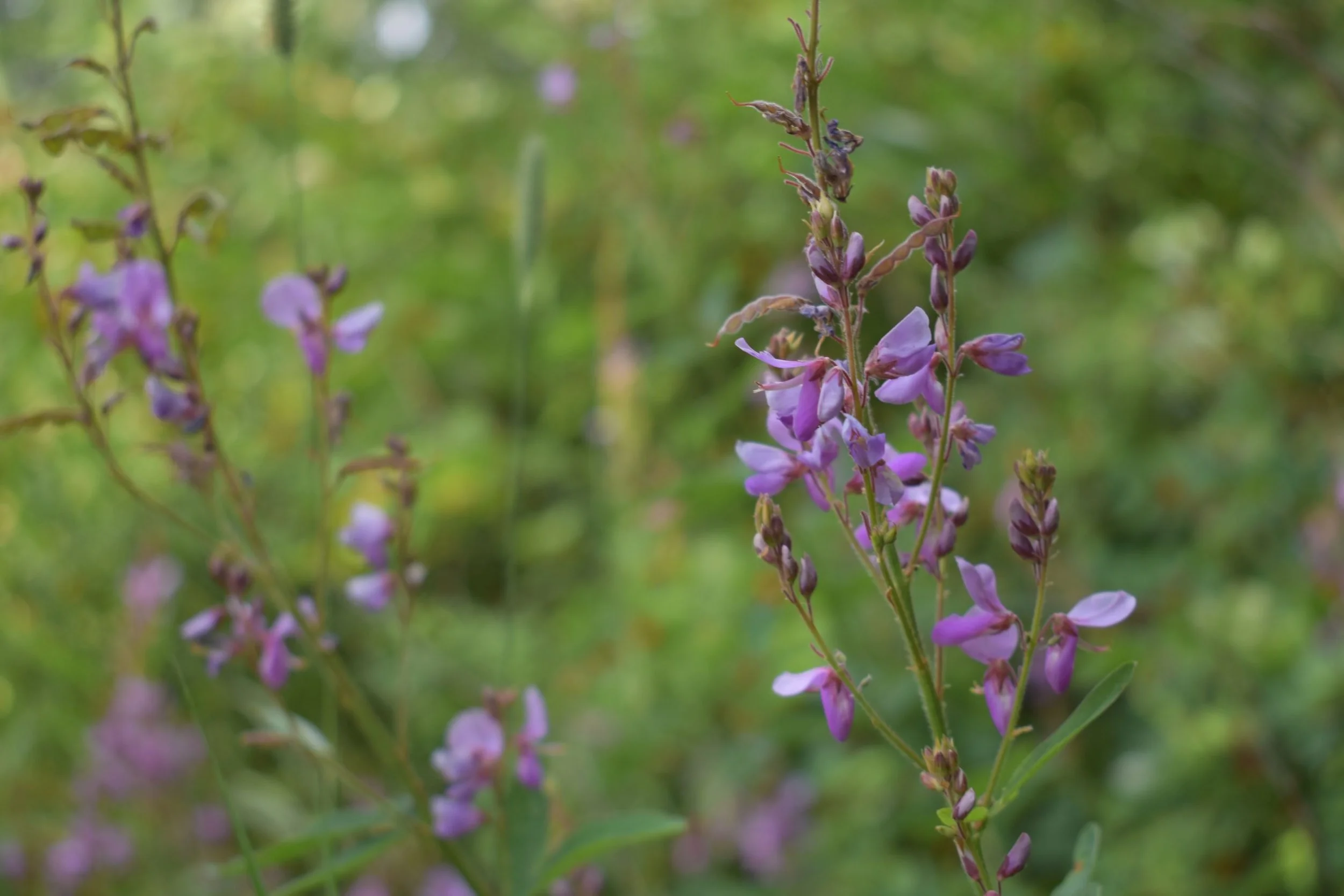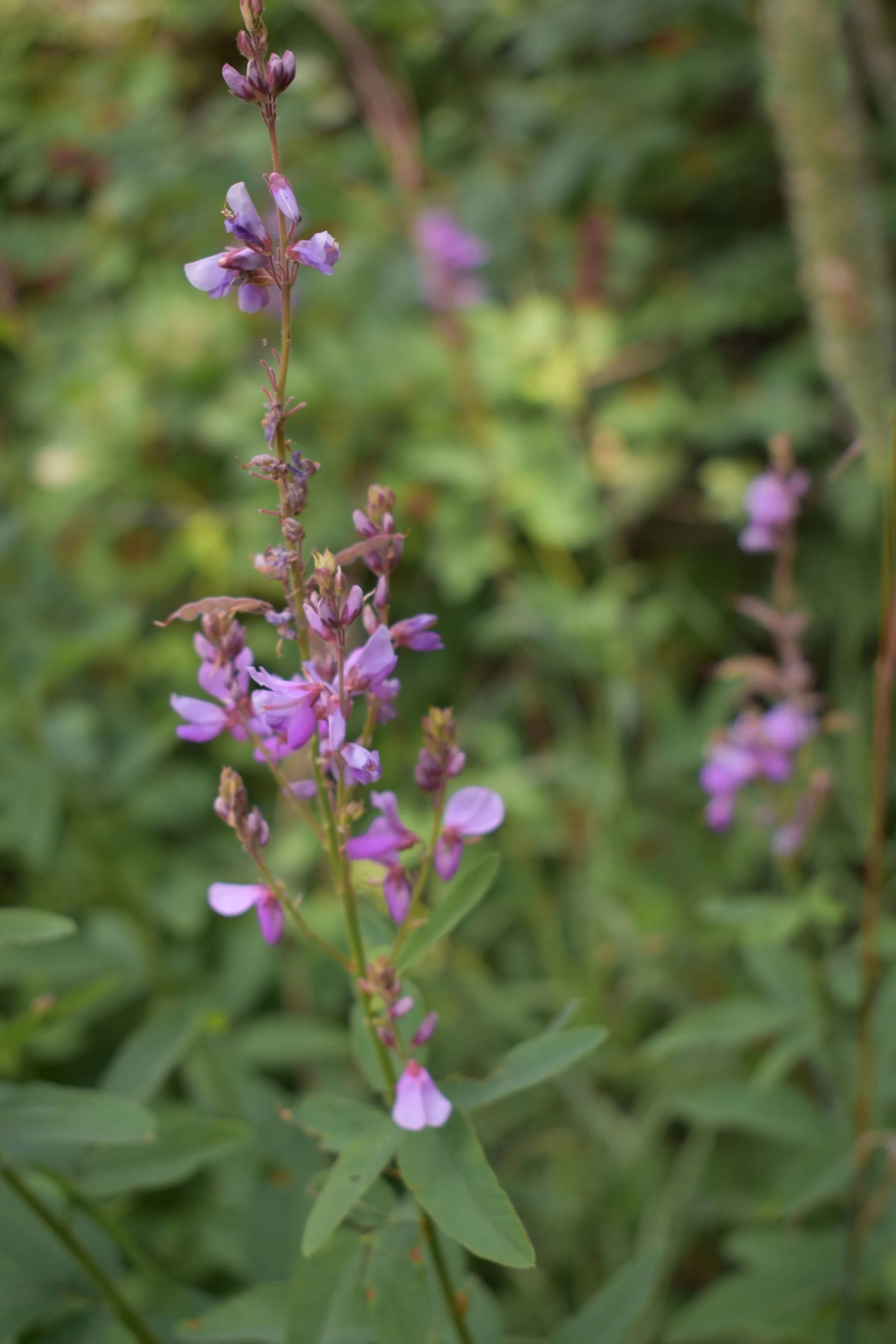By Jennifer Brockway
I tend to measure summer’s passing not by the calendar but by the flowers in bloom. This weekend, driving north after a week away, I was alarmed by the hint of purple along the roadside. Purple Loosestrife, Lythrum salicaria, an unwelcome invasive perennial, is just beginning to bloom. Soon, its purple spikes will fill roadside ditches, wet meadows and riparian edges - at the expense of native species that birds and wildlife rely upon. (How is Purple Loosestrife a threat to our wetlands? Read this.)
BUT, not all purple flowers are cause for concern! Fireweed, Chamerion angustifolium, and Blue Vervain, Verbena hastata, are two native species commonly mistaken for purple loosestrife. Both are frequent roadside bloomers, with a similar flowering time and shape. For me, though, it’s Showy Tick Trefoil that always sets off the alarm. Its purple haze of flowers in the distance always prompts a closer look each year, and quickly a relieved sigh, as the two species are easily distinguishable.
Showy Tick Trefoil blooms and fruit, with a bee visitor
A member of the pea family, Showy Tick Trefoil can be found along roadsides and streams, and in moist field edges and open woods across New England. It is a valuable plant for wildlife, providing important nutrition for deer, ruffed grouse, turkey, rabbits and mice. It is considered a particularly valuable species for bumble bees and is the larval host for several butterflies, including the Silver-Spotted Skipper and Eastern-Tailed Blue. Hummingbirds will frequent the flowers, as well.
Like other tick trefoils, the fruit are flat pods up to 2 inches long. These pods dry and break into 3-5 sections, each containing a single seed. The pods are densely covered in tiny, hooked hairs that effectively work as velcro to latch on to fur or clothing - an effective means of seed dispersal!
Identification Tips: Purple loosestrife v showy tick trefoil
Though similar in color and bloom time, that’s where the similarities between these two perennials end.
Stems
Unlike Showy Tick Trefoil, Purple Loosestrife stems are nearly square. Run your finger over the stem and you will feel the four angular edges.
Leaves
Purple Loosestrife leaves are simple, opposite or whorled, and oblong. Showy Tick Trefoil leaves are compound with 3 oblong leaflets. The differences are clear in the photo below.
Flowers
Purple Loosestrife has long, densely packed spikes of purple-pink flowers. Showy Tick Trefoil has pea-like terminal flowers in elongated clusters, in a range of purple to pink shades.
Showy Tick Trefoil, Desmodium canadense
Purple Loosestrife, Lythrum salicaria
Think you have Purple Loosestrife? Somerset SWCD can help confirm your identification, and provide management advice. Helpful information is also available in this factsheet from Maine Natural Areas Program.
Jennifer Brockway, Rise & Shine Consulting, provides outreach services for Somerset County SWCD.
All photos jbrockway/Rise&Shine




